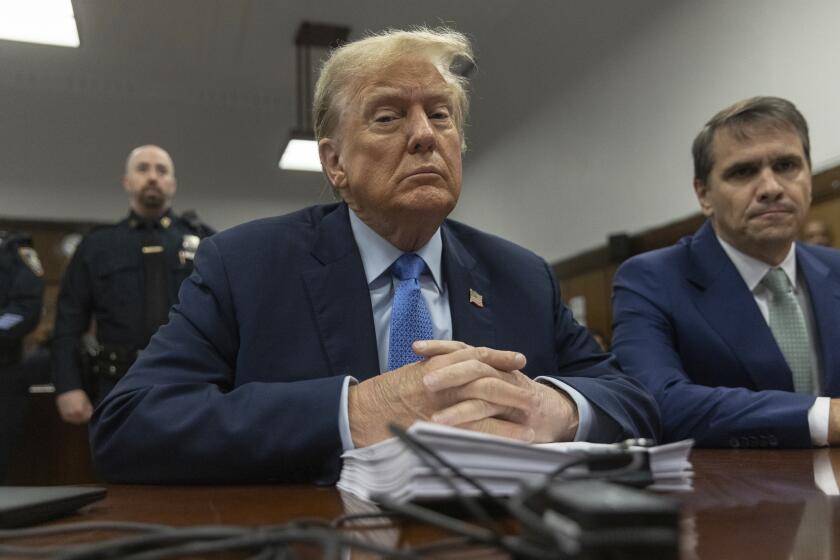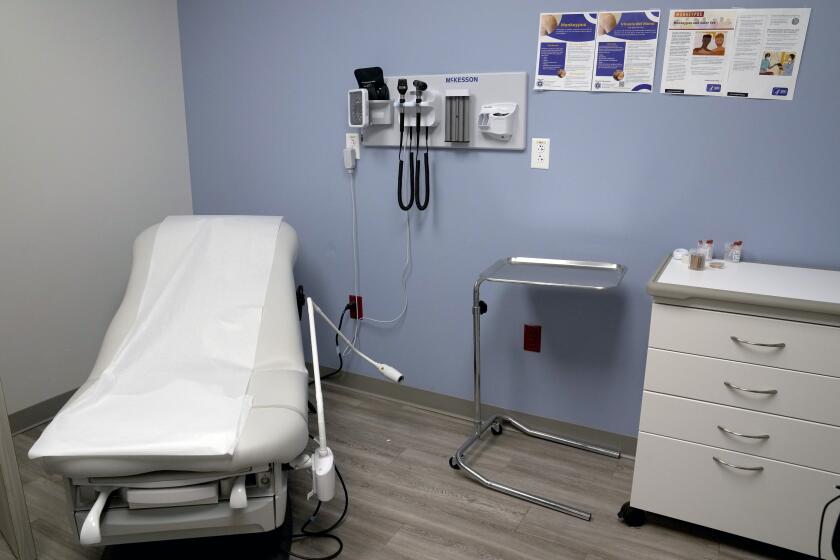Lies Sacramento tells itself
When you set out to fix something, it first pays to figure out what’s broken and why. That’s advice that state officials would do well to heed as they try to close a $14.5-billion budget shortfall. But unfortunately, the budget debate in Sacramento has served mostly to shroud the reasons for the problem in three myths.
Myth No. 1: The deficit comes from autopilot spending. In his State of the State address last month, Gov. Arnold Schwarzenegger said that “while revenues are flat, automatic formulas are increasing spending by 7.3%. Now, even a booming economy can’t meet that kind of increase. So the system itself is the problem.”
Like many other forms of conventional wisdom, this familiar complaint holds a kernel of truth.
It’s true that when the governor and lawmakers write the budget, much of the spending is already set. Proposition 98, the biggest autopilot, sets a minimum funding guarantee for K-12 schools and community colleges. Federal law and patient caseloads largely drive Medi-Cal spending. Interest on bonded debt has to be paid. Voters have locked away such revenues as tobacco taxes for their ballot-dictated priorities.
So it’s true that state officials don’t have as much flexibility as they might like about where to spend money. But it’s not true that the autopilots force California to spend more than it otherwise would or should, thereby creating deficits, which is what Schwarzenegger was driving at.
The theory doesn’t fit the facts. Despite all the formulas and mandates, spending doesn’t always grow. From 1990 to 1995 and from 2001 to 2005, governors and lawmakers held the state’s general-fund spending nearly flat. Per-capita expenditures actually fell. What’s more, policymakers can -- and sometimes do -- turn off the autopilots. (For instance, Proposition 98 was suspended in 2004.)
The best test of the theory is what has happened to school spending in the two decades since the passage of Proposition 98. The measure’s set of complicated formulas ties school and community college funding to growth in enrollment, education costs and the economy. If autopilots drive spending to levels higher than prudent policymakers would otherwise choose, you would expect to find the amount California spends on its schools rising relative to states in which elected officials have more budgeting freedom. Instead, according to Education Week’s annual survey, our schools rank 46th among all the states in per-pupil spending, adjusted for regional costs.
The reality is that budgets are sticky, whether or not they have automatic formulas. The need for, and cost of, the services that account for most spending -- schools, colleges, prisons, doctors, hospitals and nursing homes -- don’t vary widely from year to year and rarely get smaller.
Big swings in the budget hurt people, cripple government operations and are unpopular with voters. That’s why state budgets get steered mostly through small course changes made gradually over time, even in states without autopilot spending guarantees. The complaint about autopilot budgeting is mostly an excuse, not an adequate explanation for California’s mess.
Myth No. 2: The deficit comes from California’s volatile revenue system. This explanation, another hardy perennial, is seven years out of date. California’s last budget crisis, beginning in 2001, was triggered by the boom and subsequent bust of the Internet stock bubble. In the late 1990s, income tax revenues, swollen by capital gains and cashed-in stock options, soared by almost 50% over two years, from $31 billion to $45 billion, then plummeted during the next two years to $32 billion, leaving the budget in chaos.
But you only get one roller-coaster ride through “the greatest legal creation of wealth in the history of the planet,” as Silicon Valley venture capitalist famously called the dot-com era. The stock market bubble was, as Doerr suggested, an unprecedented event. Today, California is feeling something different: the dull revenue pain that every state feels when the economy slows. The housing collapse is hurting sales tax revenue as the sales of things such as construction materials and appliances fall off.
But the state projects that overall revenue will continue growing, if slowly. The governor’s budget for 2008-09 predicts a revenue shortfall from previous forecasts of only $7.5 billion over three years -- out of collections that will total about $285 billion. That’s a blip, not an adequate explanation for why California is considering closing state parks and letting thousands of felons out of prison.
Myth No. 3: More budget automatons are the answer. This is the solution offered for Myths Nos. 1 and 2. It’s odd to hear people suggest that the right fix for spending that’s said to run on autopilot and a tax system that’s said to hop around like a pogo stick is another automatic mechanism that denies elected leaders the ability to make budget choices. But that’s exactly what Schwarzenegger and others say they want: spending limits enshrined in law, automatic budget stabilization funds and the like.
Yes, putting aside excess money in strong economic years to cushion the budget in weak years is a good idea. In fact, it’s such a good idea that California already requires it. At Schwarzenegger’s urging in 2004, voters approved Proposition 58, part of which sets aside a growing proportion of revenues to create an $8-billion budget stabilization account. California also has a spending limit, originally passed as Proposition 4 in 1979 and revived by voters in 1990. It ties the maximum size of government spending to growth in population and personal income. Yet even with these restrictive mechanisms, California has a budget crisis.
Schwarzenegger’s answer is that Proposition 58 didn’t require setting aside enough excess revenue in the good years. He says the state needs to set aside 10% of its budget. But here’s where the myth-making loses all touch with reality.
When in this decade was there any “excess revenue” to set aside? For the first time in memory, the state has emerged with a budget deficit at the economic peak of a business cycle. Since 2001, it has spent more than it has collected in taxes in every budget year but one, a gap patched over with accounting gimmicks and massive amounts of borrowing and carry-over dollars from the boom years. A rainy-day fund can’t work unless your revenue base is robust enough to make hay while the sun shines. Taxes need to be high enough in normal years to pay for needed services and fill the rainy-day account.
The myths get repeated only because the truth is so unpleasant: Of the state’s $14.5-billion shortfall over this year and next, about $12 billion represents the two-year cost of the vehicle license fee that Schwarzenegger eliminated in late 2003. Another $3 billion is the cost this year of repaying some of the budgetary debt -- interest and principal -- used to cover up previous deficits.
California has a budget crisis entirely by choice -- the choice of Schwarzenegger, the Legislature and the voters. And it will stay mired in crisis until the effects of those bad choices get undone.
More to Read
Get the L.A. Times Politics newsletter
Deeply reported insights into legislation, politics and policy from Sacramento, Washington and beyond. In your inbox three times per week.
You may occasionally receive promotional content from the Los Angeles Times.





